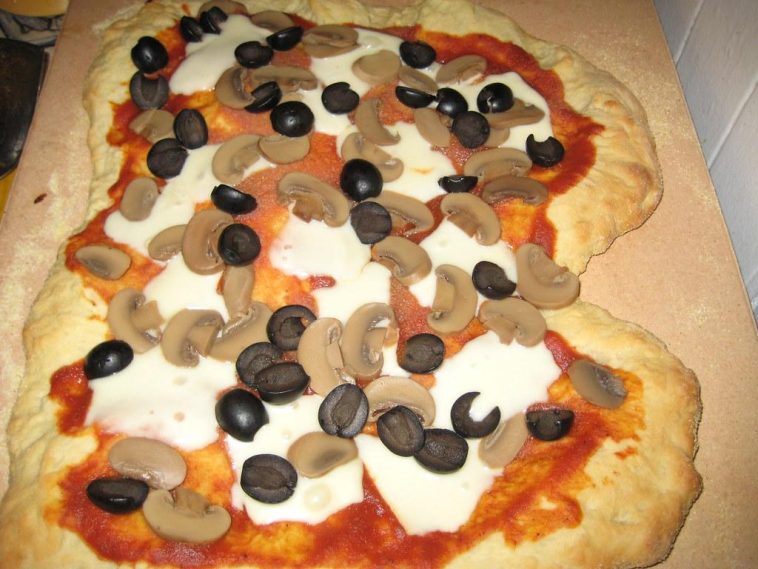In a world where convenience often takes precedence over culinary craftsmanship, the debate between homemade and delivery pizza continues to tantalize taste buds and ignite conversations. With every slice, we find ourselves at the crossroads of flavor, nutrition, and lifestyle. Is the allure of a piping hot delivery pizza worth the potential nutritional pitfalls, or does crafting your own pie at home offer a healthier alternative without sacrificing taste? This article delves into the heart of this savory debate, exploring the ingredients, preparation methods, and nutritional profiles of homemade versus delivery pizza. Join us as we slice through the cheese and crust of this topic, offering insights that may just change the way you view your next pizza night.
Crafting Your Crust: A Nutritional Exploration of Dough Options
When considering the health benefits of homemade pizza versus delivery, one pivotal factor lies in the crust. Crafting your crust at home allows you to explore a variety of dough options, each with unique nutritional profiles. Opting for whole wheat flour can significantly boost fiber content, supporting digestive health and promoting satiety. Alternatively, cauliflower crust offers a low-carb, gluten-free option that’s rich in vitamins C and K. For those seeking a protein-packed alternative, chickpea flour can be a game-changer, offering a nutty flavor and a boost of plant-based protein.
Creating your dough also opens the door to experimenting with other health-conscious ingredients. Consider incorporating flaxseed or chia seeds for added omega-3 fatty acids, or infusing the dough with herbs like rosemary and thyme for an antioxidant kick. Here’s a quick list of dough variations to try at home:
- Whole Wheat Dough: Higher in fiber and nutrients.
- Cauliflower Crust: Low-carb and gluten-free.
- Chickpea Flour Dough: Rich in protein and flavor.
- Sourdough: Contains probiotics for gut health.
By choosing to craft your crust, you’re not just making a healthier pizza; you’re embarking on a culinary adventure that aligns with your dietary preferences and nutritional goals.

Toppings Unveiled: Choosing Ingredients for Maximum Health Benefits
Crafting a homemade pizza offers the perfect canvas to explore an array of toppings that not only delight your taste buds but also bolster your health. By selecting ingredients with care, you can transform a simple pie into a nutrient-packed meal. Opt for a whole-grain or cauliflower crust as a base to boost fiber intake. Consider a sauce made from organic tomatoes, rich in antioxidants and lycopene, which supports heart health.
Enhance your pizza with a variety of vibrant vegetables, such as:
- Spinach: High in iron and vitamins A, C, and K.
- Bell peppers: Packed with vitamin C and antioxidants.
- Mushrooms: Offer vitamin D and selenium, supporting immune function.
For protein, think beyond traditional pepperoni. Lean proteins like grilled chicken or turkey can provide a healthy boost, while plant-based options such as chickpeas or lentils cater to vegetarian preferences. A sprinkle of nuts or seeds, like flaxseeds or walnuts, can add a delightful crunch and omega-3 fatty acids. The choice of cheese is crucial; opting for a moderate amount of fresh mozzarella or a sprinkle of feta can offer flavor without overwhelming the nutritional balance. By mindfully selecting each topping, you create a pizza that’s as good for your body as it is delicious.

Balancing the Scales: Caloric Comparison Between Homemade and Delivery
When it comes to calorie counts, the difference between a homemade pizza and one from your local pizzeria can be quite significant. Homemade pizzas offer the advantage of full control over ingredients and portion sizes, allowing you to choose whole grain crusts, low-fat cheeses, and fresh toppings. This can lead to a lower calorie count overall. On the other hand, delivery pizzas often come with thicker crusts, more cheese, and generous portions of toppings, not to mention the additional oils and sugars that might be used in preparation.
- Crust: Homemade allows for thinner, whole-grain options, while delivery often opts for thicker, white flour crusts.
- Cheese: Opt for reduced-fat or less cheese at home; delivery tends to be more generous with full-fat cheese.
- Toppings: Fresh vegetables and lean proteins at home versus processed meats and less veggie variety in delivery.
- Sauce: Homemade sauces can be made with less sugar and salt compared to commercial delivery options.
By crafting your pizza at home, you have the opportunity to create a balanced meal that aligns with your dietary preferences. The key lies in choosing quality ingredients and mindful preparation, making it not just a meal, but a culinary experience tailored to your health goals.

Mastering the Oven: Tips for Achieving a Healthier Homemade Pizza
Unlock the full potential of your homemade pizza by mastering the art of oven use. Achieving a healthier pizza doesn’t mean compromising on flavor or texture. Here are some tips to ensure your homemade creation rivals any delivery option:
- Preheat Properly: Make sure your oven is fully preheated to the desired temperature before sliding in your pizza. This ensures a crispy crust without the need for excessive oil.
- Choose the Right Temperature: Aim for a high temperature, around 475°F (245°C), which helps achieve a perfect balance of crispy crust and melty cheese.
- Use a Pizza Stone or Steel: These tools can help evenly distribute heat and mimic the conditions of a professional pizza oven, resulting in a well-cooked base.
- Opt for Whole Wheat Dough: Whole wheat flour adds fiber and nutrients, making your pizza a healthier choice without sacrificing taste.
- Control Your Toppings: Load up on vegetables and lean proteins while keeping cheese portions moderate to reduce calories and saturated fats.
By paying attention to these details, you can transform your homemade pizza into a healthier meal that still satisfies your cravings. Remember, the key is in the technique and ingredient selection.
To Wrap It Up
As we close the lid on our exploration of homemade versus delivery pizza, it becomes clear that the choice between them is as layered as the perfect pie. While homemade pizza offers a canvas for creativity, control over ingredients, and often a healthier profile, delivery pizza tempts with its convenience and indulgent flavors. Each has its place in our culinary landscape, catering to different needs and occasions. Whether you’re kneading dough in your kitchen or dialing up your favorite pizzeria, the most important ingredient is enjoyment. So, next time you’re pondering pizza, consider what you value most in that moment—a health-conscious creation or a ready-made delight—and let your appetite be your guide. After all, in the world of pizza, there’s always room for another slice.




